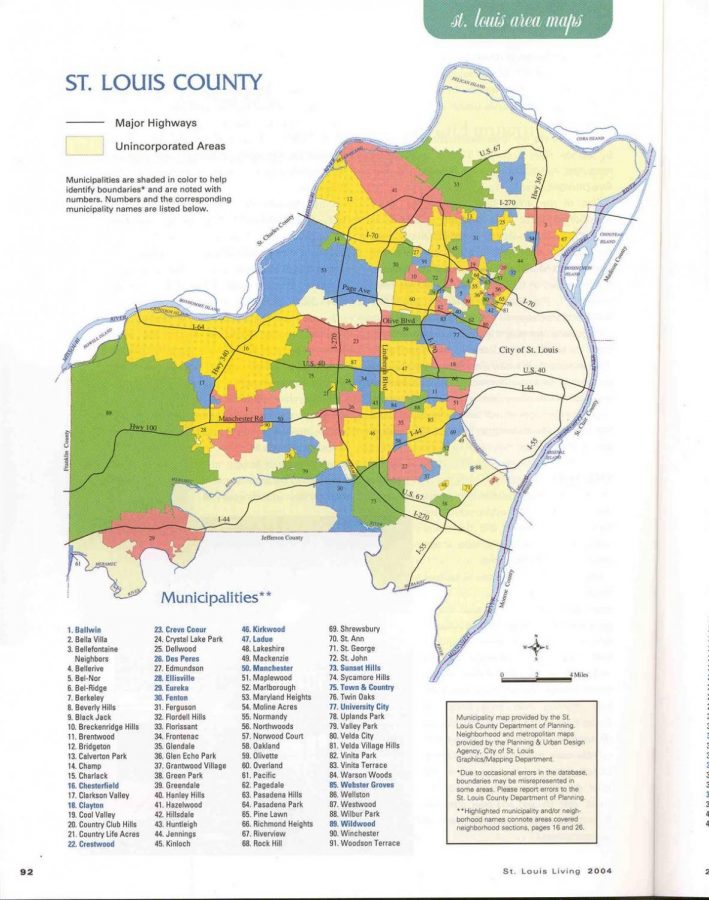Is St. Louis Really “Better Together”?
January 29, 2019
The City county merger has exposed the many number of tiny municipalities in the Metro area.
On August 22, 1876 St. Louis voters cast their ballots and it was decided that St. Louis City and St. Louis county would become separate entities with separate governments. Today, 143 years later, this issue is finally being revisited with the “Better Together” initiative.
In order to better understand this issue, it is important to understand the circumstances of that fateful vote in 1876. At the time, St. Louis city was much larger than St. Louis county as the city had a population of 310,864 while all the other municipalities had a combined population of 31,000. Business leaders in the city felt that that the Missouri legislature as well as the county government was burdensome to their business propositions. Also, they did not want their tax dollars to be used in county as the county was mostly just farmland at the time and so it seemed like a waste of their money.
So, supporters of the split formed a special committee called the Board of Freeholders and not only proposed that the city and county become separate but they also wanted to expand the city borders, tripling the area of city from to include Forest, Carondelet and O’Fallon parks. The new area of the city would be 61.37 squares miles, which was all the land that the politicians in 1876 thought St. Louis would ever need.
When the vote finally took place, it did not pass at first because “although city residents approved the split 11,878 to 11,525, […] countians trounced it 2,617 to 848, for an overall “no” margin of 1,416 votes” explained reporter Tim O’Neil in an article titled “How the ‘Great Divorce’ of St. Louis City and St. Louis County started” in the St. Louis Post Dispatch.
Supporters of the split rushed to court, citing voter fraud and after much deliberation, pro-city judge Judge Thomas Gantt decided that a total of 5,068 ballots, most of them “no” votes, were fraudulent due to eraser marks, which therefore led to overall victory margin of 1,253 of “yes” votes. In March 1877, the city finally was declared independent and although there has been many propositions to reunite the city and the county, they still remain separate in 2019.
As aforementioned, the goal “Better Together” initiative is the unite the city and the county into one entity under one government, and also grow the community. It is backed by the city mayor Lyda Krewson and County Executive Steve Stenger, and is directed by Democratic operative Nancy Rice and financed by financial executive Rex Sinquefield.
“Over the past 18 months the [Better Together] task force has hosted seven public forums, held hundreds of stakeholder meetings and received more than 1,200 online surveys in an effort to gather community input.” said director Nancy Rice.
The main issue that the Better Together initiative wishes to tackle is the lack of unity, the inefficiency, and the wasting of money that comes from having many municipal governments.
“The […] absence of a cohesive governmental structure left a void, and many smaller governments formed to fill it. This is why the 1.3 million people who call St. Louis home are served by 115 local governments, which include St. Louis City and County, as well as 90

